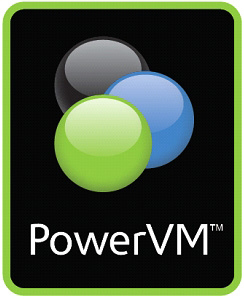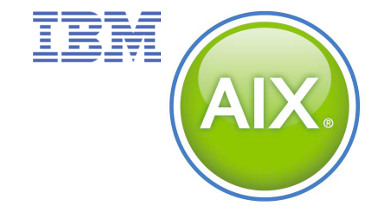Tras muchos años de publicaciones, hemos decidido integrar el blog en la web principal Sixe. Los nuevos contenidos estarán disponibles en castellano, inglés y francés.
Saludos!
Tras muchos años de publicaciones, hemos decidido integrar el blog en la web principal Sixe. Los nuevos contenidos estarán disponibles en castellano, inglés y francés.
Saludos!
Con la creciente adopción de diversas tecnologías por parte de las empresas, hay un aumento en el número y tipo de incidentes relacionados con la seguridad. Una herramienta de gestión de información y eventos de seguridad (SIEM) supervisa los registros y eventos de diversas fuentes para proporcionar supervisión de amenazas mediante la correlación de eventos. Solo de esta manera podemos proporcionar respuesta en tiempo real a los diversos incidentes de seguridad que surgen cada día en nuestras organizaciones. La adopción de IoT por parte de las empresas viene a complejizar aún más las necesidades de monitorización y securización. Vehículos conectados, fábricas autónomas, domótica o smart cities son solo algunos ejemplos.
Los datos generados por los dispositivos de IoT integrados o no en nuestras herramientas de monitorización, son una nueva e imprescindible fuente de información para nuestro entorno SIEM. QRadar le permite una total integración entre todos sus sistemas, entornos y herramientas de seguridad.
Con QRadar puede monitorizar eventos de fuentes desconocidas, incluyendo cualquier dispositivo IoT sacando el máximo partido para el cumplimiento de las diversas normativas de seguridad, optimizando sus procesos de negocio y minimizando riesgos derivados tanto del mal uso de sus datos como de ataques intencionados por parte de terceros.
¿Quiere saber más? Conozca nuestros servicios de ciberseguridad industrial con QRadar SIEM e Indegy ICS.
Una infraestructura definida por software consta de recursos de cálculo, red y almacenamiento totalmente virtualizados, agrupados de manera lógica y que pueden gestionarse como si fueran software. Esto permite el aprovisionamiento de infraestructuras basado en políticas abriendo la puerta a nuevos horizontes en la automatización de los centros de datos.
Desde comienzos de año gracias a PowerVC podemos desplegar en Power infraestructuras definidas por software (SDI) 100% compatibles con Open Stack, alternativa libre y de código abierto a AWS, Azure y Google Cloud. Para quienes os interesen los detalles técnicos a continuación tenéis un pequeño resúmen de la solución.
Read MoreOpenStack es una plataforma de software de código abierto que se utiliza ampliamente como base para construir infraestructura en nube como soluciones de servicio. OpenStack se implementa normalmente en hardware de productos básicos y se utiliza para virtualizar varias partes de la infraestructura (computación, almacenamiento y red) para facilitar el uso compartido de la infraestructura entre aplicaciones, casos de uso y cargas de trabajo. Véase una API con muchos y potentes servicios detrás, alternativa a AWS o Google Cloud.. y además Software Libre.
In 2016 and beyond, infrastructure reliability is more essential than ever for business continuity. The overall health of network operations, applications, management and security functions all depend on the core foundational elements: server hardware, server operating systems and virtualization to deliver high availability, robust management and solid security. The reliability of the server, server OS and virtualization platforms are the cornerstones of the entire network infrastructure. The individual and collective reliability of these platforms have a direct, immediate and long lasting impact on daily operations and business results.
Since 2008, corporate enterprise users rated IBM server hardware as the most reliable platform, besting 14 server hardware and 11 different server hardware virtualization platforms. A 61% majority of IBM Power servers and Lenovo System x servers achieved “five nines” or 99.999% availability – the equivalent of 5.25 minutes of unplanned per server downtime compared to 46% of Hewlett-Packard servers and 40% of Oracle server hardware
Download the ITIC 2016 Global Server Hardware, Server OS Reliability Report
CentOS (from the CentOS Project) is available for POWER8 with both Big Endian and Little Endian support ! Starting with version 7 (1511), it can be downloaded from CentOS.org website and installed on POWER8 servers.
With the entire version ported to IBM POWER, all the tools and packages you are used to are available right away. While keeping the same look-and-feel and commands, it leverages the IBM Power Systems platform to provide extreme performance, higher levels of availability and increased flexibility.
Where?
http://mirror.centos.org/altarch/7/isos/
It is available in both Big and Little Endian environments 😉
 New features in this release of IBM® PowerVM® V2.2.4 include support for the following:
New features in this release of IBM® PowerVM® V2.2.4 include support for the following:
New or improved features in this release of IBM PowerVC V1.3.0 include support for the following:
IBM has released HMC 8.8.4 as of 9/14/2015 IBM has not provided support for this version of HMC with IBM PowerVC 1.2.3 (or any prior release). If you are using IBM PowerVC do not upgrade your HMC to this latest release yet.
IBM support statement will be documented here if changed.
currently only 8.8.2 and 8.8.3 are supported
Have fun and keep waiting.. like us 🙂
Power8 ofrece la mejor relación entre coste y rendimiento, no hay rival para su bus interno, su ancho de banda entre procesador y memoria y los 8 hilos de cada uno de sus cores. Unos recientes “benchmarks” con MariaDB (heredera de MySQL) arrojan los siguientes resultados.
| OLTP clients | MariaDB-10.0.21 | MariaDB-10.1.8 | increase |
|---|---|---|---|
| 160 | 398124 | 930778 | 135% |
| 200 | 397102 | 1024311 | 159% |
| 240 | 395661 | 1108756 | 181% |
| 320 | 396285 | 1142464 | 190% |
Detalles de las pruebas de rendimiento:
Fichero my.cnf
[mysqld]
max_connections = 400
table_open_cache = 800
query_cache_type = 0
innodb_buffer_pool_size = 512M
innodb_buffer_pool_instances = 10
innodb_adaptive_hash_index_partitions = 20
Comando sysbench lanzado:
sysbench-mariadb --test=lua/oltp.lua --oltp-tables-count=20 \
--oltp-table-size=50000 --num-threads=... --oltp-read-only=on \
--oltp-point-selects=1000 --oltp-distinct-ranges=0 \
--oltp-simple-ranges=0 --oltp-sum-ranges=0 --oltp-order-ranges=0 \
--max-time=100 --max-requests=0 run
SW & HW utilizado
Servidor IBM “Firestone” S822LC Power8 con 2 sockets, 20 cores y 8-way SMT (160 hardware threads). Usando PowerKVM 3.1 y virtualizado un Ubuntu 14.04.3 LTS (ppc64le). Base de datos MariaDB-10.1.8 y sysbench-mariadb compilados localmente con IBM Advance Tool Chain 8.0Fuente (inglés): https://blog.mariadb.org/10-1-mio-qps/
 Por fin tenemos la esperada nueva versión de AIX. Entre sus novedades está el soporte para CAPI, el parcheo del kernel en caliente (tanto de TL como de SP), SR-IOV para compartición de tarjetas con soporte para Live Partition Mobility e mejoras en el soporte y optimización de entornos híbridos con SSD. Os dejamos el enlace de IBM con el resto de novedades explicadas en detalle.
Por fin tenemos la esperada nueva versión de AIX. Entre sus novedades está el soporte para CAPI, el parcheo del kernel en caliente (tanto de TL como de SP), SR-IOV para compartición de tarjetas con soporte para Live Partition Mobility e mejoras en el soporte y optimización de entornos híbridos con SSD. Os dejamos el enlace de IBM con el resto de novedades explicadas en detalle.